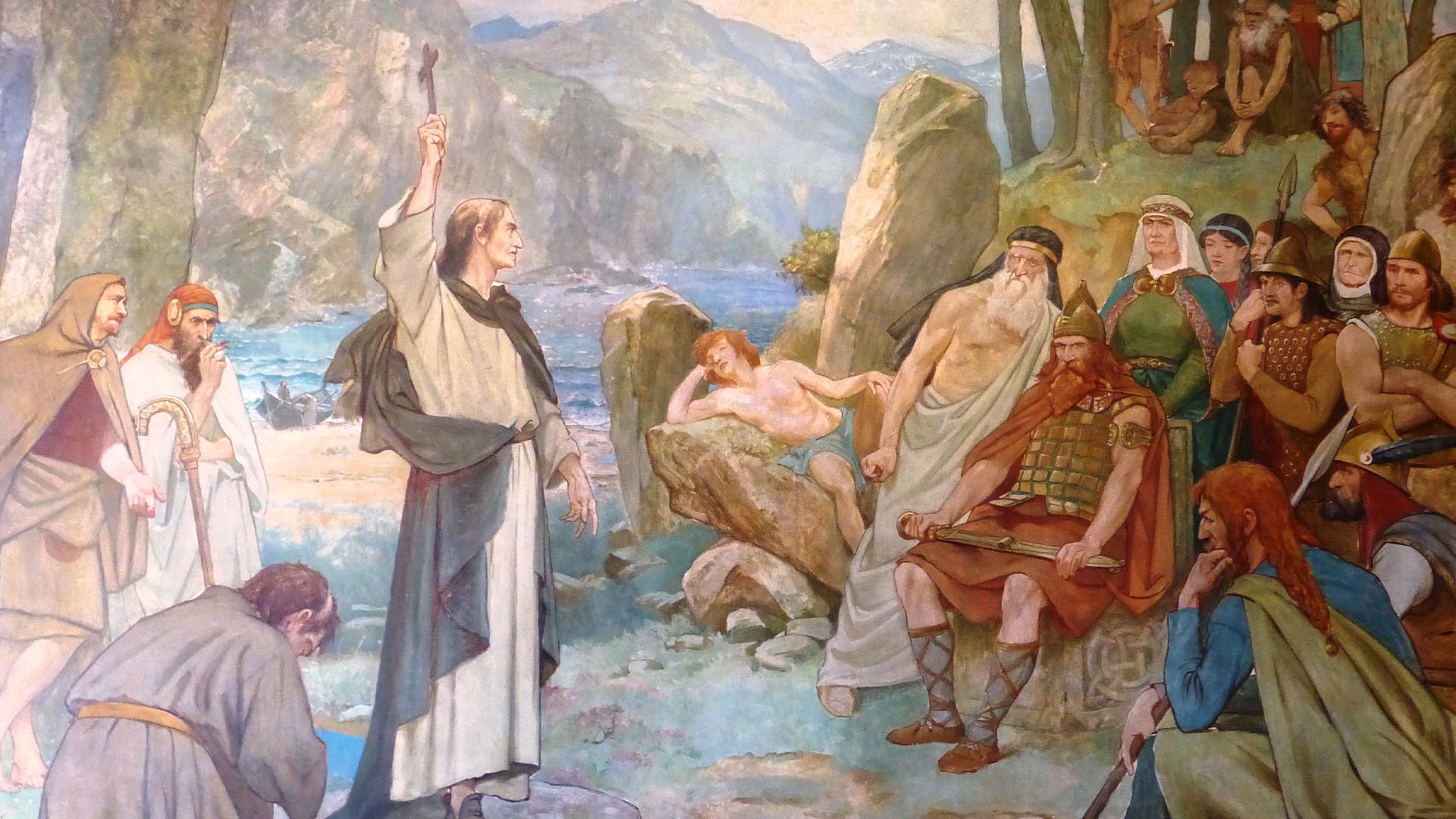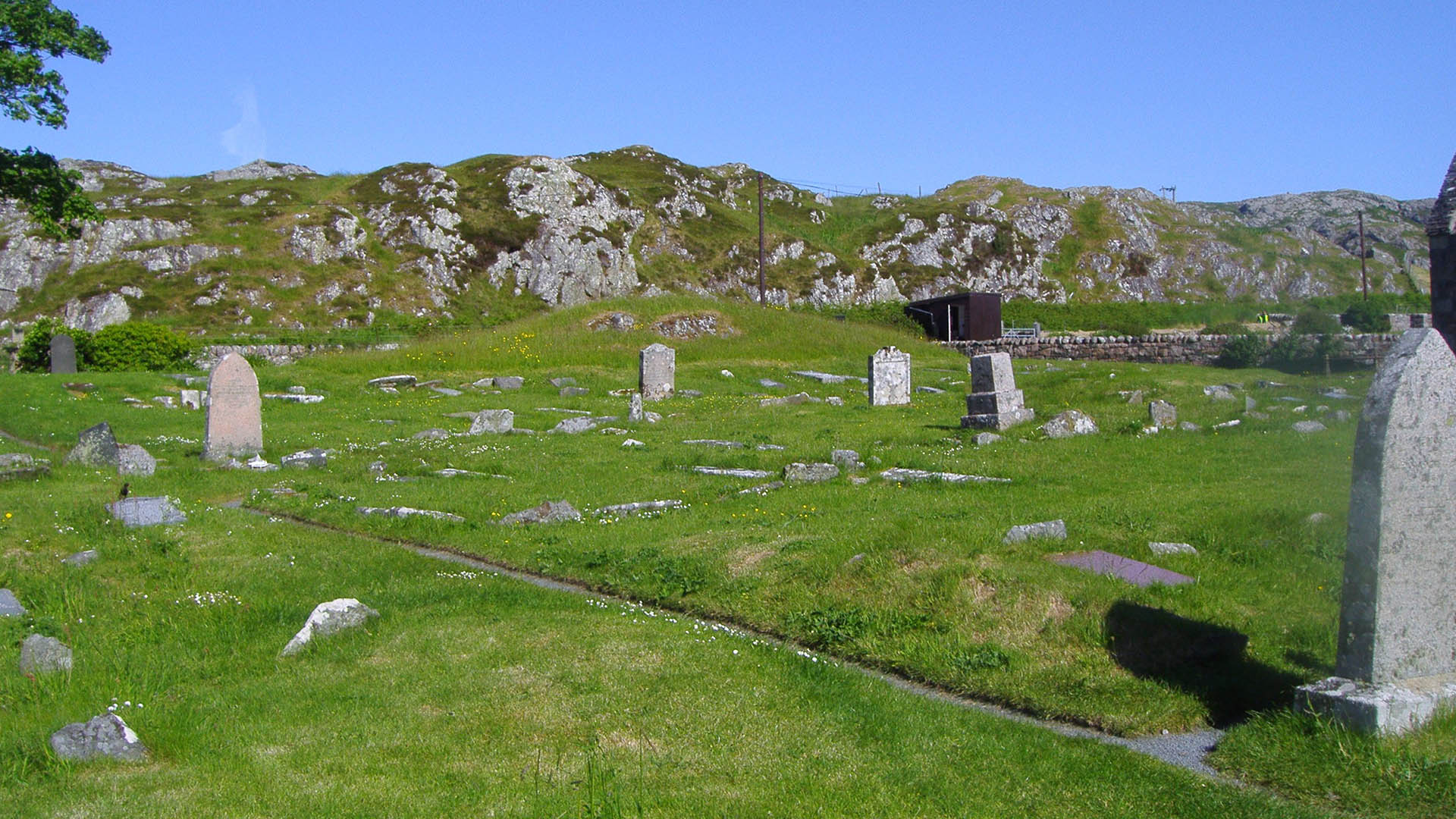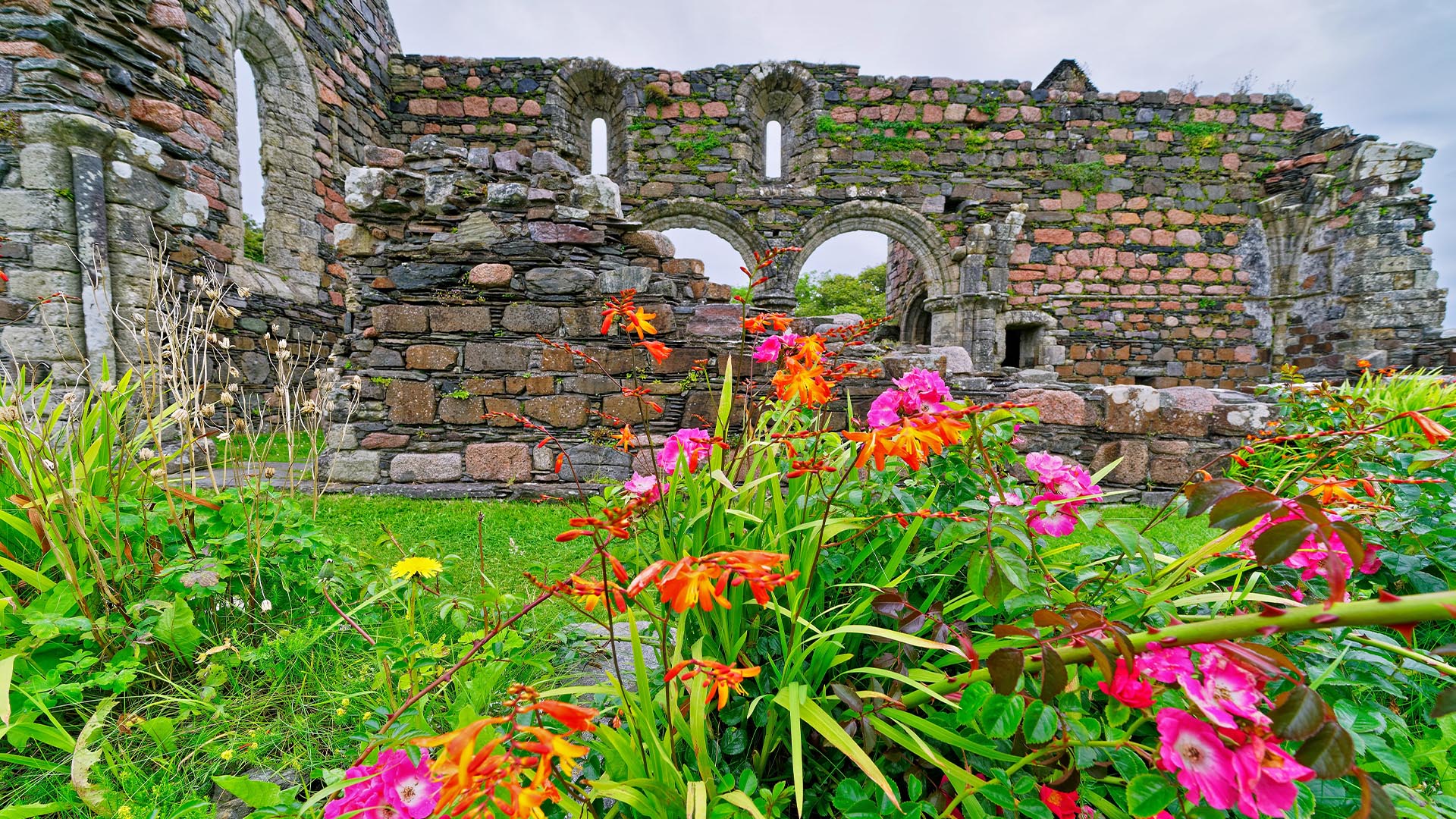Just off the southwest coast of Mull lies the serene island of Iona, a tiny jewel in the Inner Hebrides with a history that resonates far beyond its shores. Often described as the “cradle of Christianity in Scotland,” Iona has drawn pilgrims, scholars, and spiritual seekers for over 1,400 years. If you’re planning a visit to Mull, a day trip to Iona is an absolute must to immerse yourself in its profound past and tranquil beauty.
A Journey Through Time: Iona’s Storied Past
Iona’s story begins in AD 563 when St. Columba, an Irish monk, arrived on its shores with twelve companions. Seeking a place from which he could no longer see his native Ireland, he established a monastery here. This humble beginning marked the birth of Celtic Christianity in Scotland, and the monastery rapidly grew into one of the most important and influential monastic centres in the British Isles.

Saint Columba converting King Brude of the Picts to Christianity William Hole, CC BY-SA 3.0, via Wikimedia Commons
From Iona, missionaries spread the Christian faith throughout northern Britain, converting the Picts and Anglo-Saxons. The island became a renowned hub for learning, art, and manuscript illumination. The magnificent Book of Kells, one of the world’s most famous illuminated manuscripts, is widely believed to have originated here before being moved for safety.
However, Iona’s peaceful existence was shattered by the arrival of the Vikings in the late 8th century. Repeated raids led to the destruction of the monastery and the dispersal of its monks. Despite these brutal attacks, Iona’s spiritual significance endured. It continued to be a place of pilgrimage, and for centuries, it served as the traditional burial ground for Scottish, Irish, and even some Norwegian kings. Legend has it that 48 Scottish kings, including Macbeth, were laid to rest in Reilig Odhráin, the ancient burial ground.

Reilig Odhrain (St Oran’s Burial Ground)Reilig Odhrain (St Oran’s Burial Ground) by Euan Nelson, CC BY-SA 2.0, via Wikimedia Commons
In the 13th century, a Benedictine Abbey and an Augustinian Nunnery were established, rebuilding Iona’s monastic life. While the Reformation in the 16th century led to the suppression of monastic orders, Iona’s spirit never truly faded. In the early 20th century, the Iona Community was founded, dedicated to rebuilding the Abbey and fostering a contemporary Christian community focused on justice, peace, and spiritual renewal. Today, the Abbey stands as a testament to this enduring legacy, a place of active worship and ecumenical dialogue.
Want to delve deeper into Iona’s fascinating history? Consider these books:
- “The Story of Iona: An illustrated history and guide” by Rosemary Power
- “Mull and Iona: A Historical Guide” by David Caldwell
What to See and Experience on the Sacred Isle
1. Iona Abbey
The undisputed heart of the island. Give yourself ample time to explore the Abbey church, the cloisters, and the museum. The museum houses an incredible collection of original and replica carved stone crosses, grave slabs, and other artefacts that offer a tangible connection to Iona’s early Christian past. Don’t miss the St. John’s Cross replica standing outside the Abbey, a stunning example of Celtic artistry.
- Tip: Look out for daily services or reflections held by the Iona Community – visitors are usually welcome to join.
2. Iona Nunnery Ruins
As you walk from the ferry pier towards the Abbey, you’ll pass the atmospheric ruins of the Augustinian Nunnery. Founded around the same time as the Benedictine Abbey, these are some of the best-preserved medieval nunnery ruins in Scotland and offer a poignant glimpse into the lives of the nuns who once resided here.

The ruins of the nunnery on Iona.Holger Uwe Schmitt, CC BY-SA 4.0, via Wikimedia Commons
3. Reilig Odhráin (St. Oran’s Cemetery) and St. Oran’s Chapel
Located just beyond the Abbey, this ancient burial ground is the legendary resting place of kings. While many of the original grave markers are now in the Abbey museum, the sense of history is palpable. St. Oran’s Chapel, the oldest standing building on Iona, stands within the cemetery, a simple yet powerful structure.
4. Dun I (The Hill of Iona)
For breathtaking panoramic views, a climb to the summit of Dun I, the island’s highest point (a modest 101 metres/333 feet), is highly recommended. On a clear day, you can see across to Mull, Staffa, Tiree, Coll, and even as far as Ireland. Near the summit, you’ll also find the “Well of Eternal Youth,” a natural spring often visited by pilgrims.
5. St. Columba’s Bay (Port a’ Chrùin)
Located on the island’s southern tip, this beautiful pebble beach is traditionally believed to be where St. Columba first landed on Iona. The walk to get there is a rewarding journey through the island’s rugged landscape, offering stunning coastal views and a sense of pilgrimage. Keep an eye out for the colourful Iona marble pebbles on the shore.
6. Iona Heritage Centre
Near the village, this small but insightful museum tells the story of Iona’s crofting community, its geology, flora, and fauna, offering a broader understanding of island life beyond its religious history.
7. White Sand Beaches
Iona boasts several stunning white shell-sand beaches with turquoise waters, particularly on the north and west coasts. Traigh Mhor (Big Beach) and Port Bàn (White Port) are popular for their beauty and tranquillity. Perfect for a peaceful stroll or simply soaking in the incredible island scenery.
Don’t get lost! A good map is essential for exploring Iona:
Iona truly is a place where history comes alive, where every step on its ancient soil whispers tales of saints, kings, and enduring faith. Whether you’re drawn by its spiritual heritage, its stunning natural beauty, or simply the desire for peace and reflection, Iona promises an unforgettable experience.


